While planning to create raised beds for your plants and researching their measurements, a question will strike you: How deep should a raised bed be? There is no fixed measurement because different plants will require different measurements. But there can always be a rough estimation.
The raised bed should be at least around 6-12 inches deep. Plants with shallow roots will get fit with such depth. But, plants with a bit deeper and longer roots will need a 24-36 inches raised bed. These measurements may vary depending on the root system of different plant types.
Some growers create a bit more depth to make extra space for mulching. There are several factors to consider while measuring the depth of raised beds.
To gather detailed information regarding this, read this article till the end.
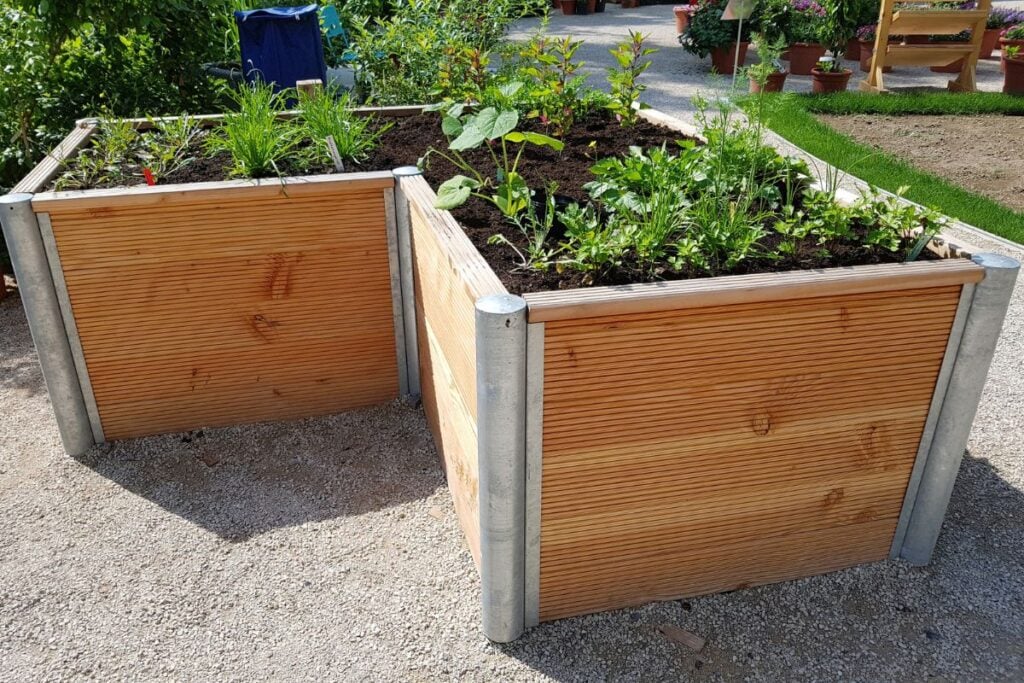
Why does depth matter in raised beds?
When you create raised beds, the roots get limited space to grow deeper.
Maintaining a proper depth will allow your plants to grow their roots with a proper depth.
If you don’t create sufficient depth, it will restrict the root growth and harm the plant’s overall development.
Another thing is the soil.
If the soil of the ground is sandy, tight, and clayey or has old tree roots, the height of the raised beds will change so that the plants can grow at their best within the parameters of the bed.
Depth also matters depending on the placement.
The bed should have enough space for the roots to grow without obstructions.
How deep should the raised beds be? – Factors determining the depth
Generally, a raised bed should be around 6-12 inches deep.
But, it depends on various factors.
The measurement keeps changing because different plants require diverse spaces for growth.
But 12 inches is ideal because most plants require this much space to grow their roots.
12 inches of space is plenty and sufficient for flexible growth.
You also get enough space at the surface for mulching.
Some growers also suggest 24 inches and 36 inches.
The former is to allow wheelchair access and the latter to avoid bending over.
Let’s go through some factors in detail that determines the raised bed depth:
Plant type
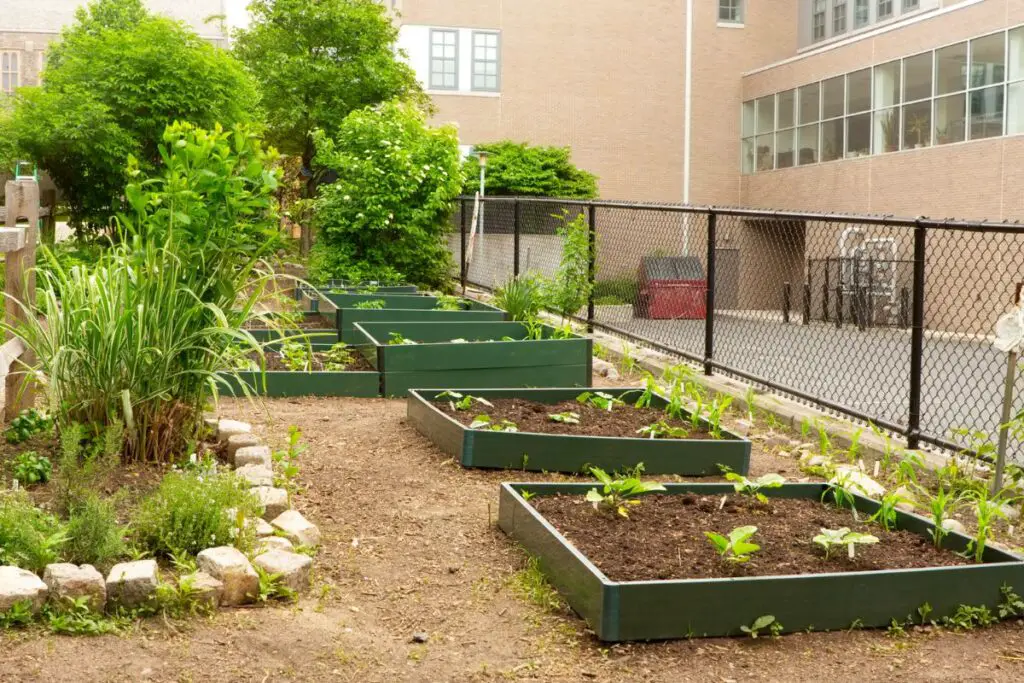
Some plants have shallow roots, and some have long, extensive, and deep roots.
You need to create less deep raised beds if your plants are shallow.
But, if the plants have deeper roots, create deeper beds so that they don’t struggle to develop.
However, if you keep the raised beds in the soil, the plants with deeper roots won’t struggle much.
The problem can occur in concrete places because the roots get stuck in a wall.
Some shallow-rooted plants will do well in raised beds 12-18 inches deep, such as broccoli, lettuce, spinach, and garlic.
Some deep-rooted plants will do fine at a depth of 18-24 inches or 24-36 inches, for example, asparagus, tomatoes, pumpkins, and rhubarbs.
You can also leave extra space for mulching.
Looking for gardening supplies? We have tested 100's of products before recommending them to you guys. Check out our best pick below:
| Image | Gardening Supplies | Best Price? |
|---|---|---|
 Top
Top Top
Top | Raised Garden Bed Kit | Check On Amazon |
 | XLUX Soil Moisture Meter, Plant Water Monitor, Soil Hygrometer Sensor for Gardening, Farming, Indoor and Outdoor Plants, No Batteries Required | No Results |
 Top
Top Top
Top | 82 Pcs Garden Tools Set and Extra Succulent Tools Set | Check On Amazon |
 | Joeys Garden Expandable Garden Hose with 8 Function Hose Nozzle, Lightweight Anti-Kink Flexible Garden Hoses, Extra Strength Fabric with Double Latex Core, (50 FT, Black) | No Results |
 Top
Top Top
Top | Dual Chamber Compost Tumbler | Check On Amazon |
 Top
Top Top
Top | Sunnyglade Plant Stakes | Check On Amazon |
 Top
Top Top
Top | Organic Cold Pressed Neem Seed Oil | Check On Amazon |
 Top
Top Top
Top | Mighty Mint Gallon :-Insect and Pest Control Peppermint Oil | Check On Amazon |
 Top
Top Top
Top | Scotts DiseaseEx Lawn Fungicide | Check On Amazon |
 Top
Top Top
Top | Jacks Classic 20-20-20 All Purpose Fertilizer | Check On Amazon |
 Top
Top Top
Top | 30,000 Seeds Pollinator Attracting Wildflower Mixture | Check On Amazon |
 Top
Top Top
Top | Survival Vegetable Seeds Garden Kit-Over 16,000 Seeds | Check On Amazon |
Location of the bed
The placement of the raised beds determines the depth of the bed.
As I have mentioned, the roots hit a wall while growing if you create a bed over concrete areas like rocks or patios.
When this happens, it will inhibit root growth. It further affects the plant’s overall growth.
So, in that case, you have to make the bed a little deeper so that the roots don’t get any obstructions and grow flexibly.
On the contrary, you don’t have to make it very deep if you create the beds in the soil.
Since there is the soil beneath, your plant’s root growth won’t get obstructed by anything.
For flexible growth in the ground, till the top 6 inches of the ground soil and break its compactness before creating the raised bed so the roots can easily grow.
Remove the weeds, grasses, and old plant materials from the ground.
Ergonomic and Adaptive gardening
If you want raised beds for ergonomic and adaptive gardening, you have to make the beds a little deeper than the standard beds.
With tall beds, you can sit on the edges and continue the gardening work without bending much.
A tall, raised bed also supports wheelchair access.
Creating the beds up to the height of legs or stilts.
Make sure the width remains 3-4 feet.
Drainage
Drainage is the main purpose of growing plants in raised beds after weed growth.
These beds don’t let the excess water remain in the soil.
Therefore, the plants growing in these beds rarely suffer from overwatering.
Create deeper beds if you have heavy soil that retains water for a long time.
If the bed is deeper, the moisture will drain and collect in the lower portion of the bed due to gravity.
How deep should the soil be in a raised bed?
The depth of raised bed and soil goes hand in hand.
A raised bed is made taller so the roots can develop freely without obstacles.
For the same reason, you have to use the same depth of soil to give the roots enough soil.
The roots will receive all the moisture and nutrients from the soil.
So, you must add sufficient soil to give the plants enough nutrition and moisture.
How to fill a raised bed?
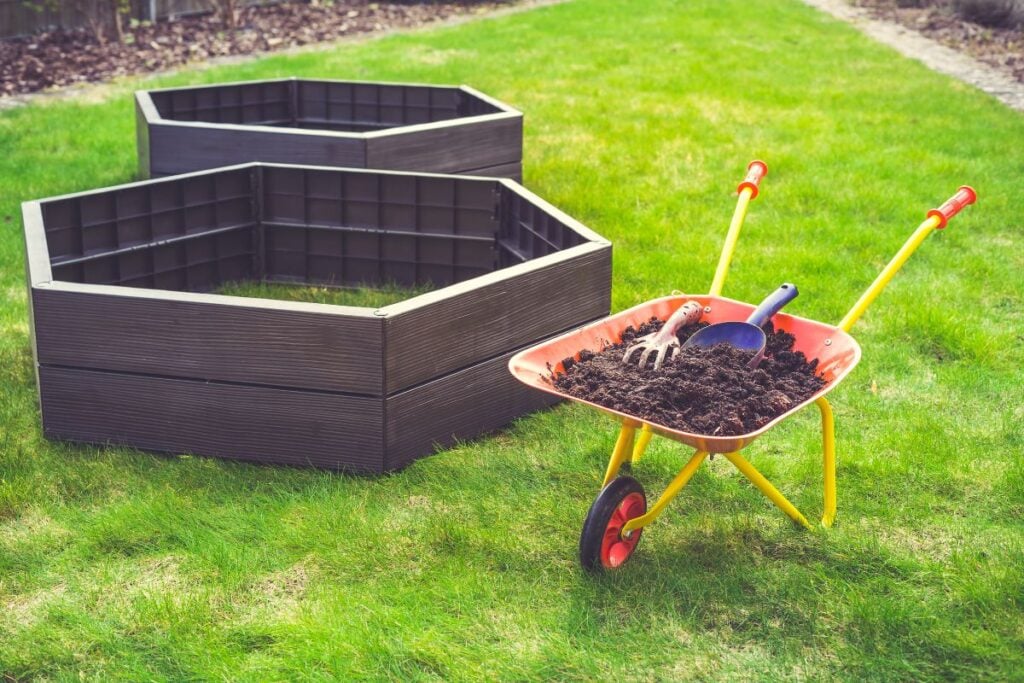
While you fill up the bed, you should leave the top a few inches and fill up the rest at the bottom.
For example, if you have made a raised bed of 12 inches, fill the bed and leave the top 3-5 inches empty.
Here, you can add mulches later on.
You must also ensure that the plant growing in this 12-inch bed can thrive in the remaining 7-inch soil and doesn’t face any obstacles during the root growth.
What to do with shallow raised beds?
The depth of the raised bed doesn’t matter if you have kept the bed over the soil and the soil is loose and airy.
The plants can grow their roots below into the ground and have healthy roots without any issues.
In this case, you are giving your garden an aesthetic look with these designed raised beds.
You can grow shallow beds if you are growing greens like kale, spinach, or lettuce.
You only need to create a 6-18 inch raised bed for them.
It is also applicable for ground covers.
The same applies to the vertical raised beds where the shelves measure only 18 inches deep.
You can also grow some herbs like parsley and cilantro.
If you create shallow beds, you must remember that these beds dry out quickly and require lots of water frequently to remain moist.
Also read: 17 Materials To Put In Bottom Of Raised Bed? (Cheap & Best Alternatives)
Why should we make higher raised beds?
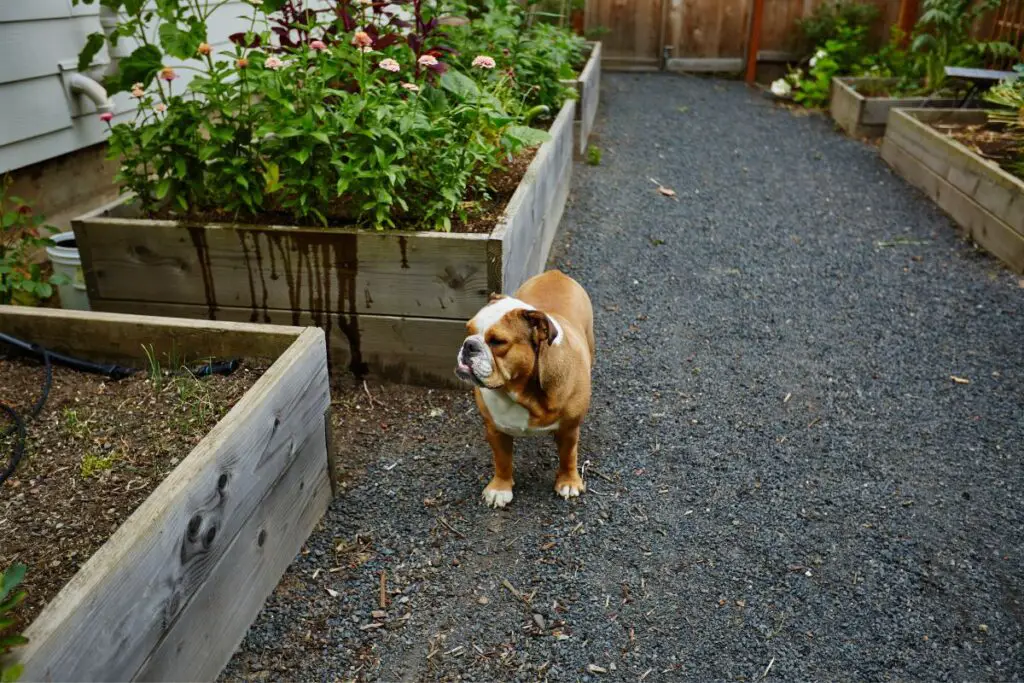
High-raised beds are excellent for growers who cannot or don’t enjoy bending downwards or kneeling while caring for the plants.
Besides, it gives the roots enough space to grow at their best.
The best part is you can have them anywhere, whether over the soil or in concrete areas.
At the same time, higher raised beds are expensive to fill up because they require lots of soil.
When you create tall beds, keep certain things in mind, like:
- The cost of the beds. The higher the bed, the more the cost.
- Soil condition under the bed. Make the bed taller if you don’t want to work out the garden soil. But if you can work it out and make it flexible, you don’t have to make it very tall.
- The soil depth. While making the bed, know how much soil you can fill and how much the plants need.
- The limit of bending. You will have to bend over and care for the plants in taller beds, like watering or fertilizing. So, make it carefully.
Other things to consider:
- Cross support: When you create a tall bed, it needs more soil to fill. When you water it, the soil becomes heavy. It will make the soil bow outside. To prevent this, you have to put criss-cross support at the center to hold the soil.
- Bottom support: These are required for beds with legs. These will have the same problem when you water the soil, which becomes heavy. You might have to use concrete block support to keep the bed in its position.
Best height for raised garden bed
The best height for raised garden beds is 11 inches.
Anything between 8-12 inches will also work well.
This is ideal because it will provide the required drainage that most vegetables or herbs need.
Remember to have around 12 inches of soil below the raised bed.
List of some popular vegetables and herbs and their raised bed height
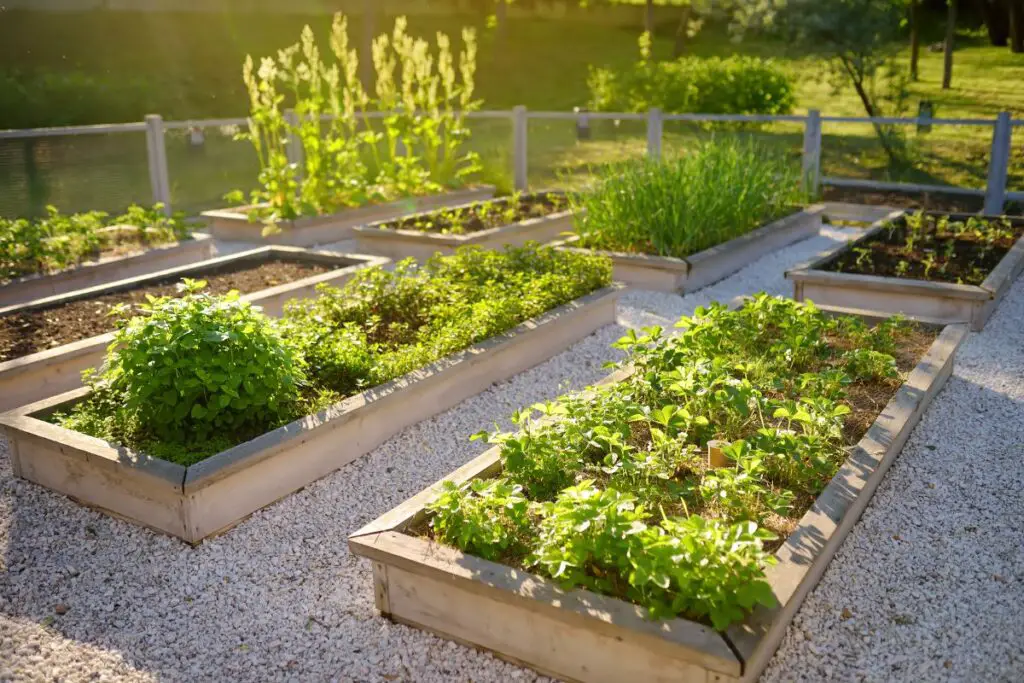
To help you more precisely, I have shared the raised bed depth and height of some common vegetable plants and herbs so that you don’t have to spend more time behind them.
| Name | Raised bed height |
|---|---|
| Mint | 5-6 inches |
| Lettuce | 6 inches |
| Radish | 12 inches |
| Carrots | 12 inches |
| Green beans | 12 inches |
| Peas | 8-12 inches |
| Ginger | 10-12 inches |
| Garlic | 12-18 inches |
| Asparagus | 12-24 inches |
| Onion | 12 inches |
| Kale | 18 inches |
| Squash | 18 inches |
| Tomatoes | 18 inches |
| Cucumbers | 18 inches |
| Zucchini | 18 inches |
| Peas | 24 inches |
| Sweet potatoes | 12-24 inches |
| Pumpkins | 24-39 inches |
| Eggplants | 12-18 inches |
| Beetroot | 24-36 inches |
| Broccoli | 18-24 inches |
| Potatoes | 18-24 inches |
| Carrots | 12-18 inches |
| Cabbage | 18 inches |
| Spinach | 12-18 inches |
| Cauliflower | 18-30 inches |
| Peppers | 18-24 inches |
| Corn | 12-18 inches |
| Brussel sprout | 12-24 inches |
| Celery | 18-24 inches |
| Artichoke | 24-36 inches |
| Cantaloupe or sweet melon | 18-24 inches |
| Leek | 12-18 inches |
| Okra or Lady’s finger | 24-39 inches |
| Beans, Lima | 24-39 inches |
| Endive | 18-20 inches |
| Rhubarb | 24-39 inches |
| Arugula | 18-20 inches |
| Kohlrabi | 12-20 inches |
| Parsnip | 24-39 inches |
All the measurements of the raised beds of the above vegetables may vary depending on the various factors.
If you are keeping the raised bed in the ground of your garden, you can consider making the heights a little less than mentioned.
If the roots hit the ground, they will continue to grow into the ground soil.
If you keep the beds over concrete areas, make the height a few inches more so that the roots get space to develop and don’t stop after hitting the ground.
In the list, I have taken 2-3 inches more than the actual soil and normally raised bed depths.
In that way, you can have the option of adding thick layers of mulch whenever needed.
Final thoughts
Making raised beds with the proper depth is very important. It allows the soil to grow flexibly, encourages good drainage, and controls weed growth.
The ideal size of raised beds should be 10-12 inches. Now, this may increase or decrease depending on the plant type, placement, gardening type, and drainage.
The list given in the article can save you time in searching for the right depth of the raised beds. However, don’t completely rely on this list. To confirm, find out about the specific herb or vegetable and then proceed.
Reference: ScienceDirect, American Society of Agronomy, Noble Research Institute, Building a Raised Bed Garden, Developing design guidelines for calculating of width and height of raised bed.
